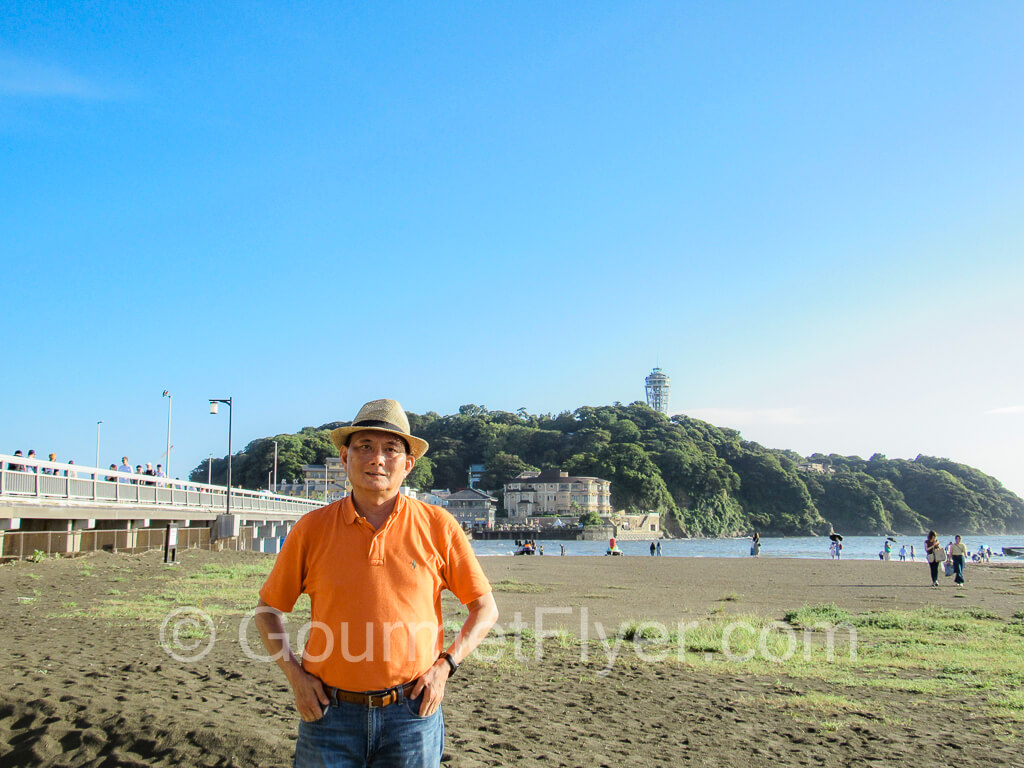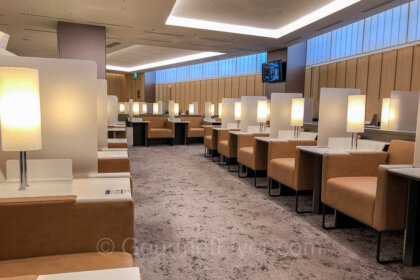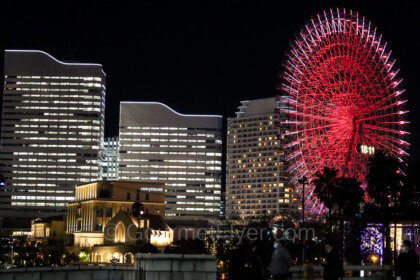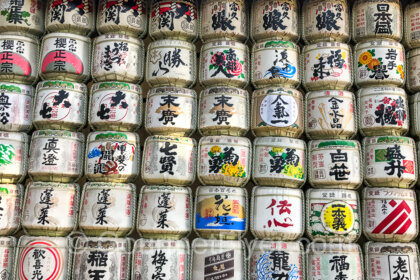Updated January 15, 2023
Table of Contents
Overview
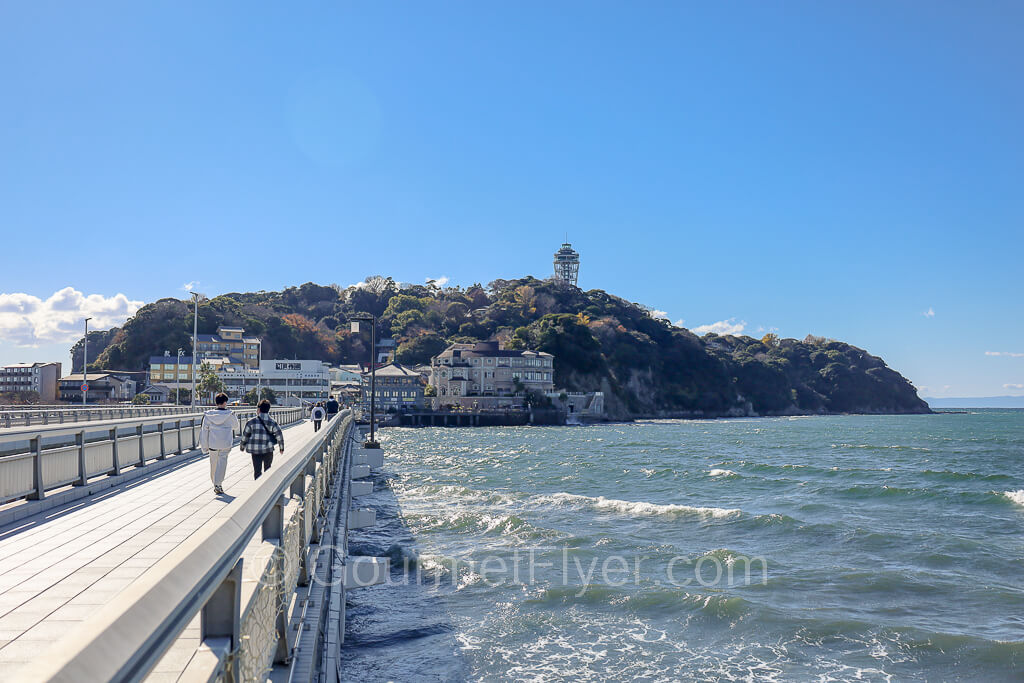
Enoshima, a quaint and charming island easily accessible by train, is one of the most favorite day trips from Tokyo by tourists and locals alike.
For most visitors to Tokyo, the itineraries for your first one or two trips are typically filled with so many major tourist attractions and cultural experiences that there is no need to go beyond the city.
But there will come a time when you have seen most of Tokyo and would like to spend a day away from the hustles and bustles of the city, and to discover a more rural side of the Japanese culture. This enchanting island, which is just about an hour away by train, seems to be the perfect choice.
The easiest and quickest way to get to Enoshima from Tokyo is by train. You can go there by car but during peak seasons and weekends, traffic and parking are close to impossible, so I highly recommend taking the train.
Access
From Tokyo or Shinagawa Stations, you can either take the JR Ueno-Tokyo Line to Fujisawa or the JR Yokosuka Line to Kamakura. From Shinjuku (JR) Station, take the JR Shonan-Shinjuku Line to Fujisawa. Either way, you will connect to the Enoshima Electric Railway to Enoshima Station.
From other parts of the city, your initial goal is to get to either Fujisawa or Kamakura Stations and connect from there.
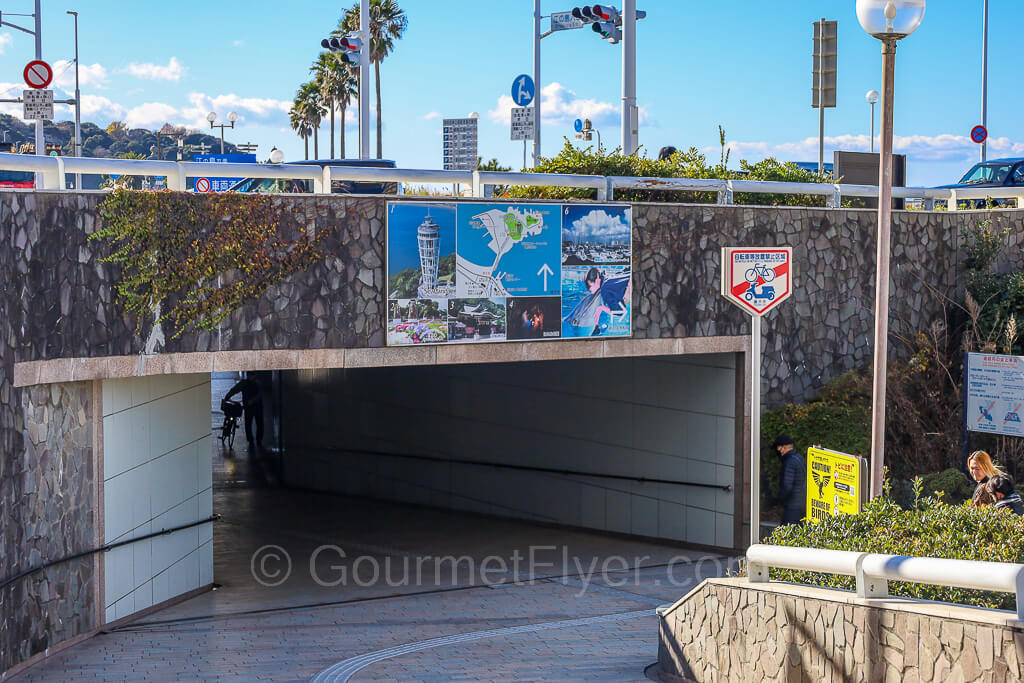
From the Enoshima Station there is approximately a 15-minute walk before reaching the bridge that will take you to the island. The path is very straightforward. As you exit the train station, take a left and continue on the main road until you see the sign (pictured above) that directs you to an underpass. From there the bridge is just steps away.
There are many restaurants and cafes along the way. But unless you are absolutely starving, I highly recommend that you dine at the restaurants on the Island for the best views and cultural experiences.
Nakamise Street
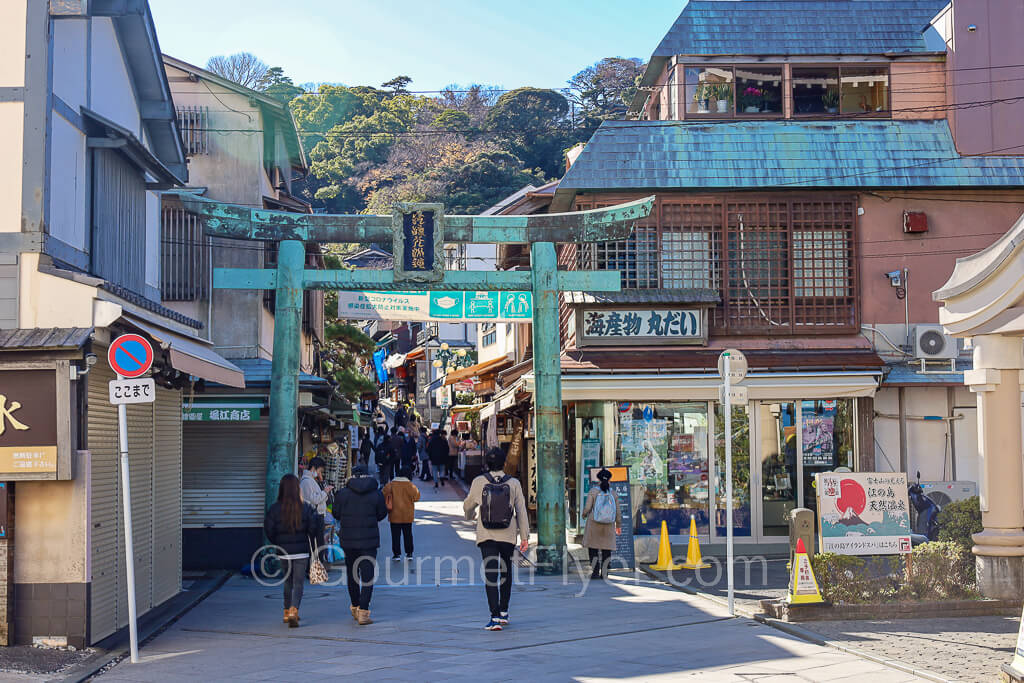
Once you’ve crossed the bridge the main road ahead is Nakamise Street which is easily identifiable by the iconic green, bronze gate. The street is lined with souvenir shops, restaurants, cafes, dessert shops, and other food vendors. It is a lively and vibrant street to enjoy.
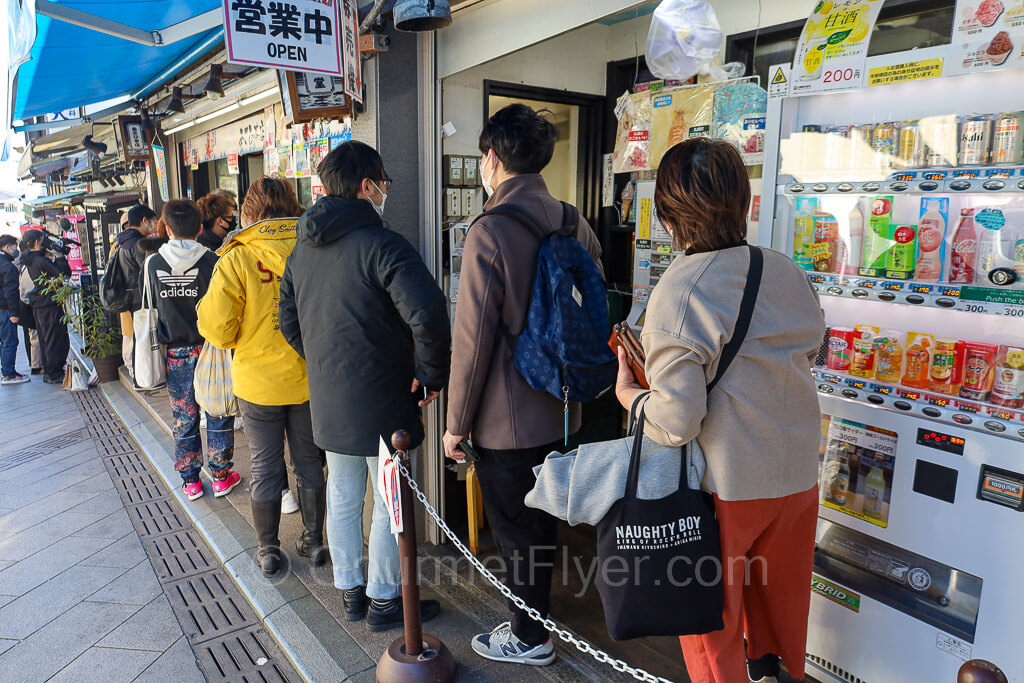

Long lines are typical at several of the favorite stores, especially the one that sells tako senbei — a snack that is made with an entire roasted octopus pressed into a crispy sheet. Other popular snacks include grilled squids, croquettes filled with seafood, ice creams, and mochis. There are also plenty of full-service restaurants that serve mostly traditional Japanese cuisines.
Many vendors offer a wide variety of local flavors packaged nicely for you to take home. Some also offer free samples. I am going to pick up a few yummy treats to surprise and impress my friends and family back home.
Stairs and Escalators
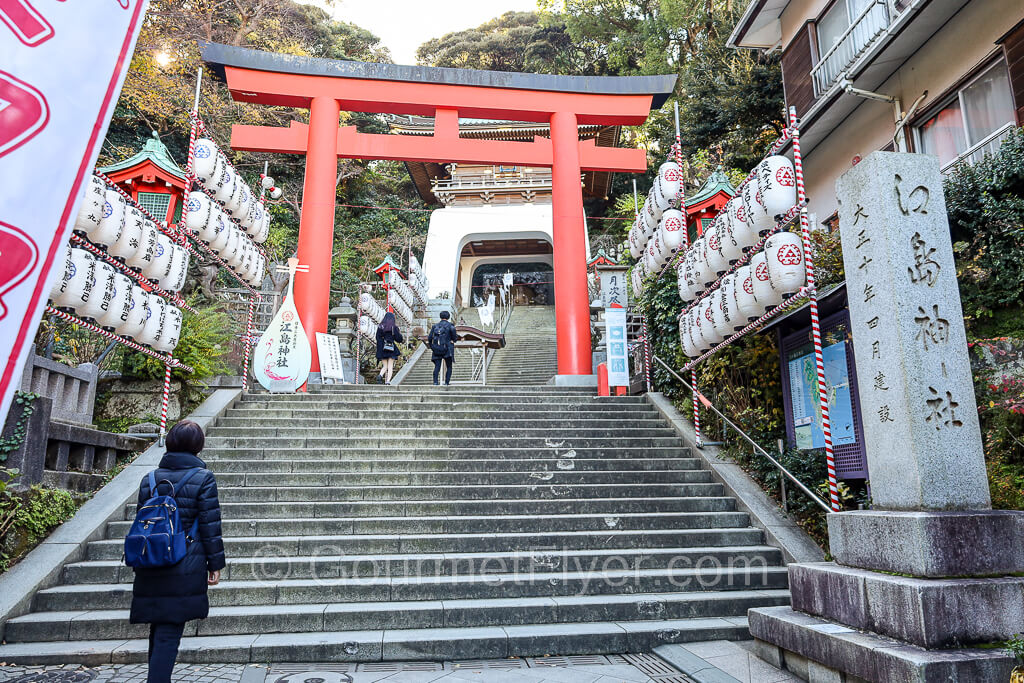
At the end of the street a long stairway leads to a prominent red torii gate which marks the entrance to the sanctuary of the Hetsumiya Shrine — the first of three shrines on the island, collectively known as the Enoshima Shrine. This is also the starting point of several sets of long and sometimes rather steep stairways which lead to the Samuel Cocking Garden, a major attraction of the island.
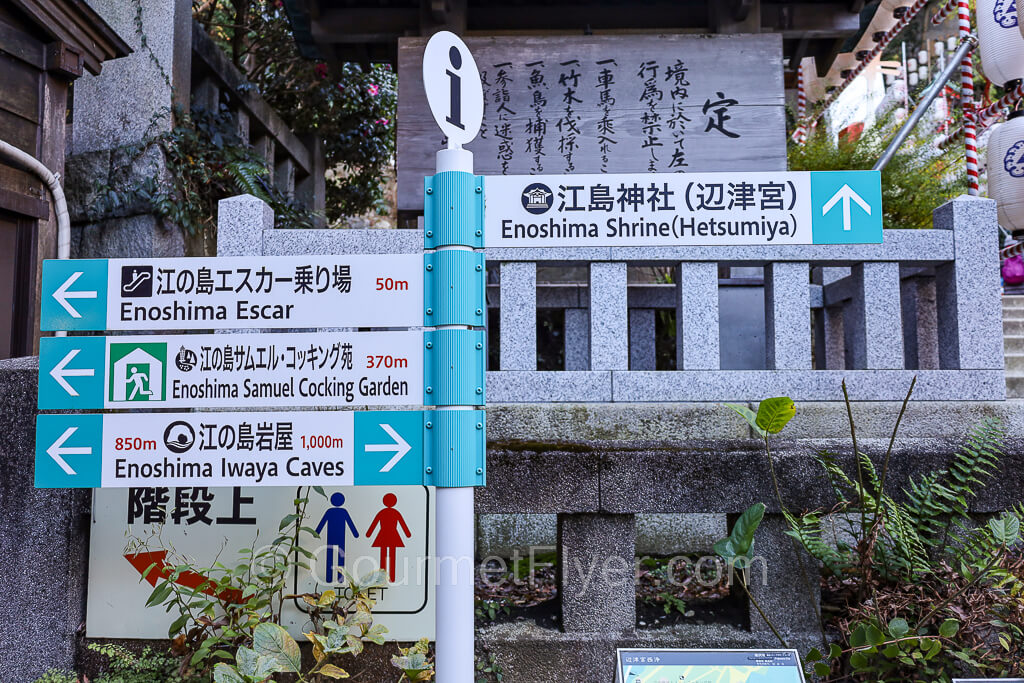
Instead of climbing those stairs and getting a rigorous workout, you can instead take the escalators (for a fee). If you opt to take the escalators, do NOT walk up those stairs. Instead, take a left and follow the sign pictured above to ticket office. You can purchase just the escalator ride or individual attractions, but I highly recommend that you buy the combo ticket which also includes the observation tower (Sea Candle) and the Iwaya Caves.
Luminous Way
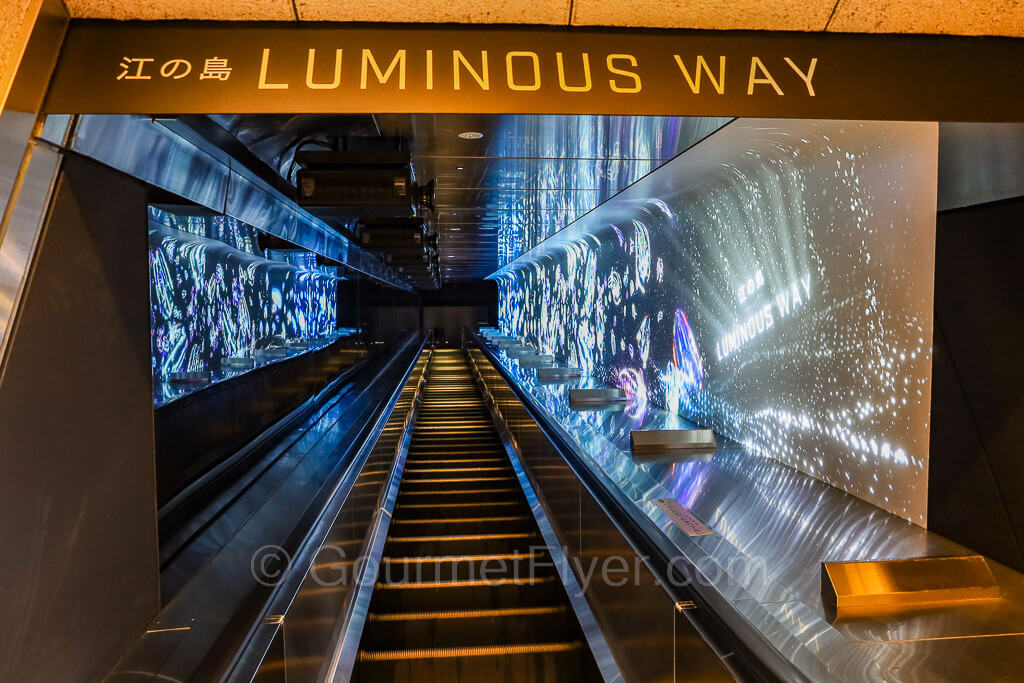
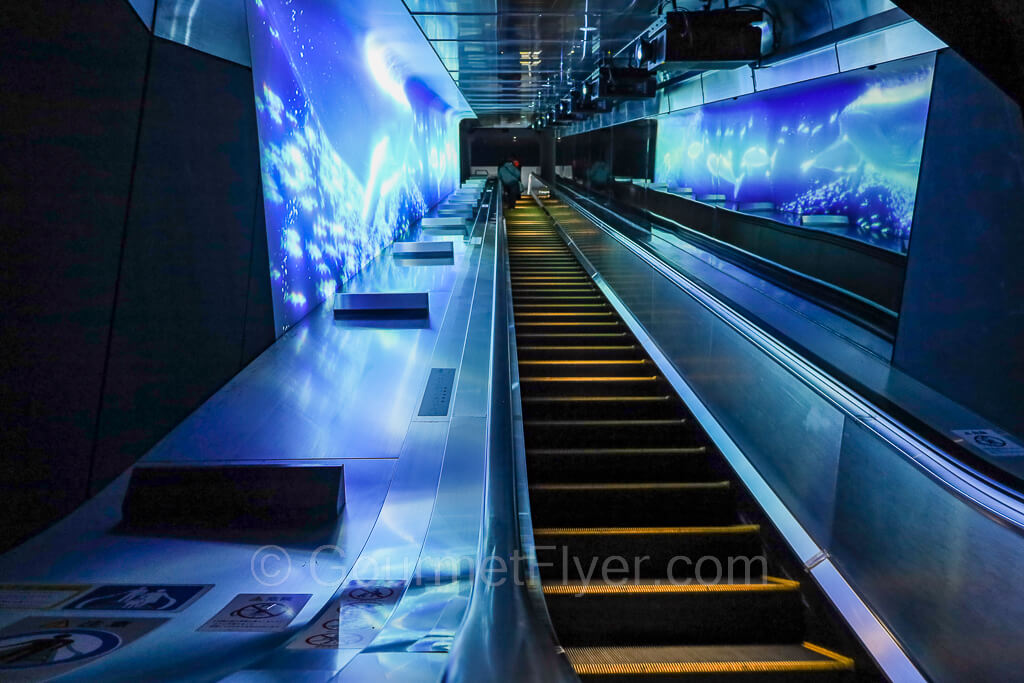
The Luminous Way is a set of three escalators. The first escalator is illuminated with an outer space-like theme and leads to the Hetsumiya Shrine. The second escalator, with a blue and purple illumination, leads to an intermediate stop which is also the site of a smaller shrine. The third escalator, which is shorter and not illuminated, leads to the Samuel Cocking Garden.
Samuel Cocking Garden
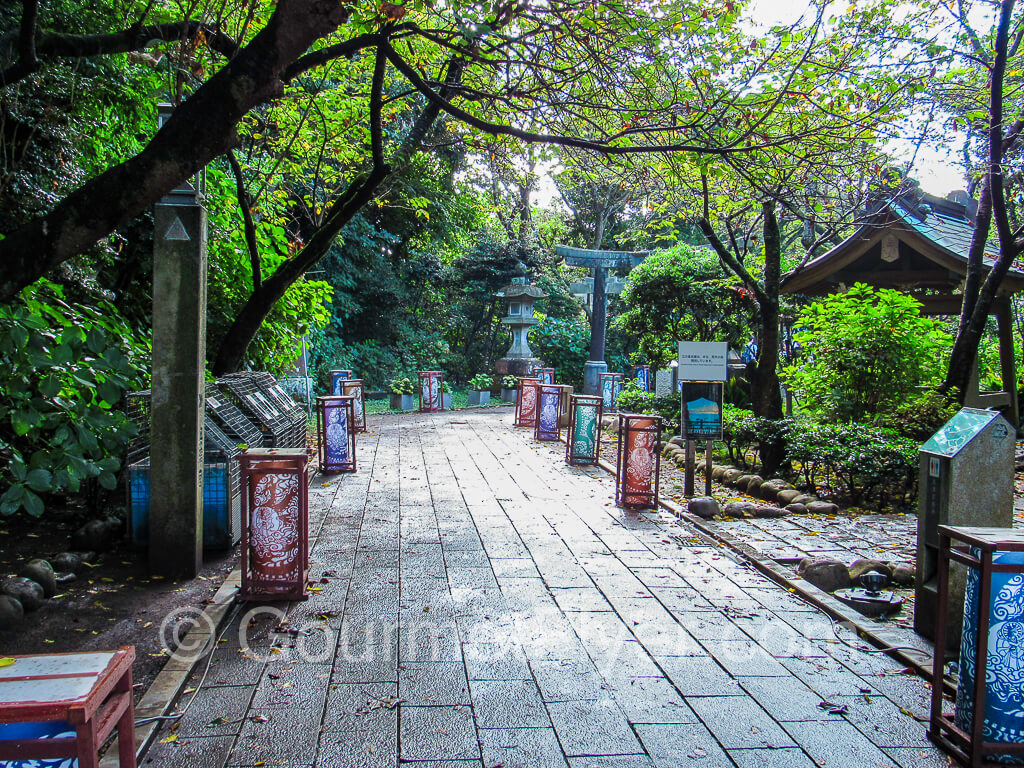
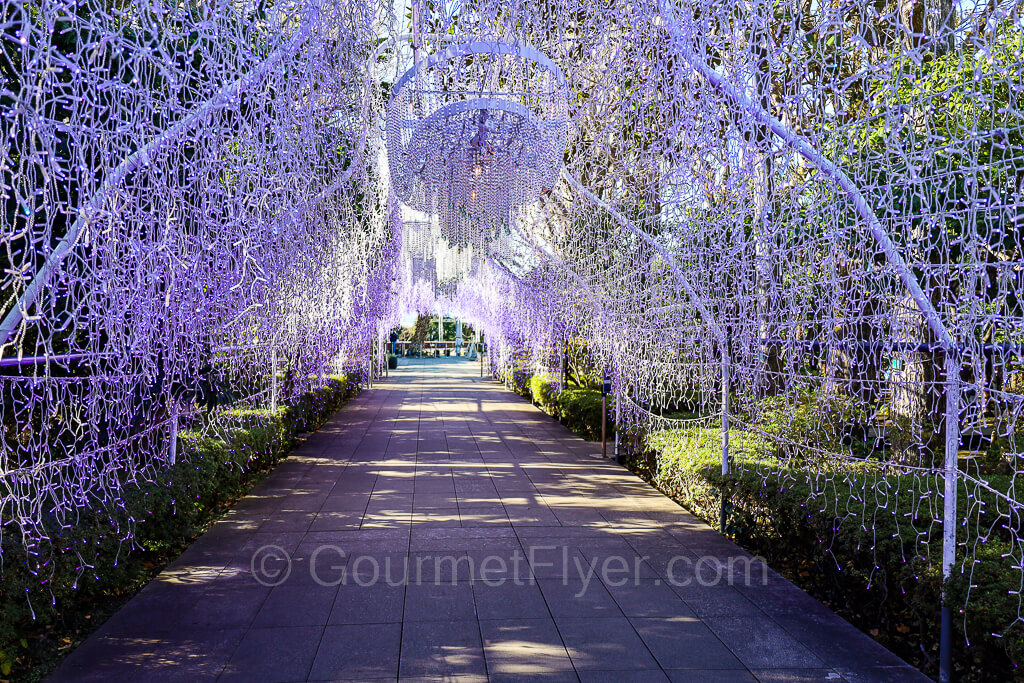
This botanical garden is full of seasonal flowers which are particularly vibrant in the spring and summer months. If you visit in the winter months, there are not many blossoms to observe but the island typically hosts many special events in the garden. The picture above right shows the setup for the Enoshima Illuminations in December 2022.
Sea Candle
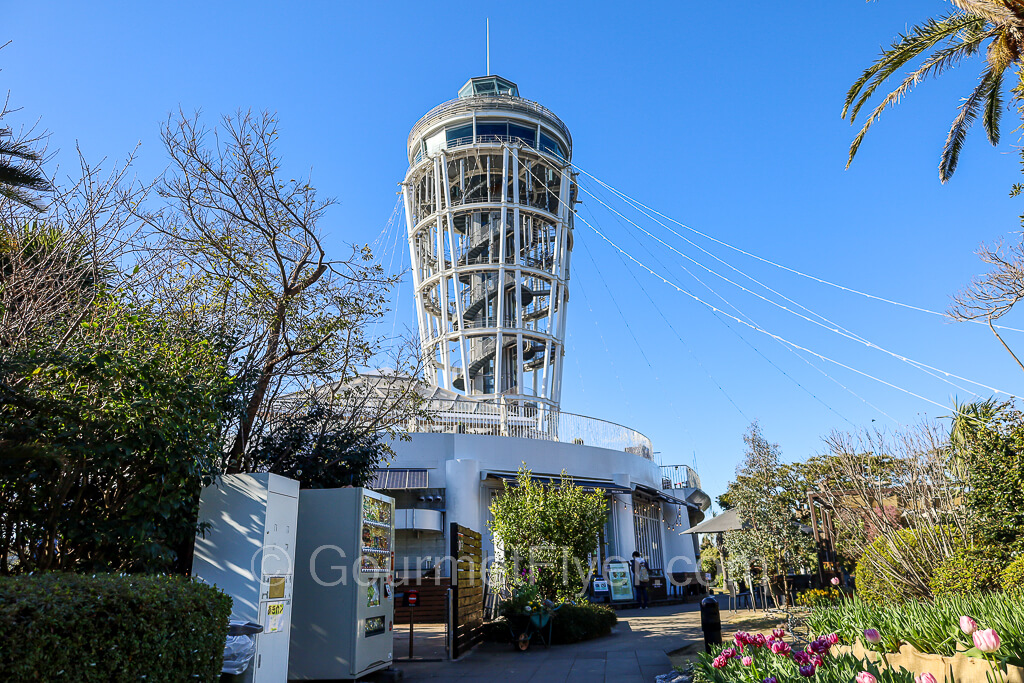
The Sea Candle is the observation tower of the island. You can purchase a ticket for admission to the Sea Candle separately. But if you’ve purchased a combo ticket with the escalator ride, then admission is already included. The architecture is rather unique that a spiral staircase leads to the top of the tower. Admission to the observation deck on the top is by the elevators only, however, you can take the stairs down when you exit.
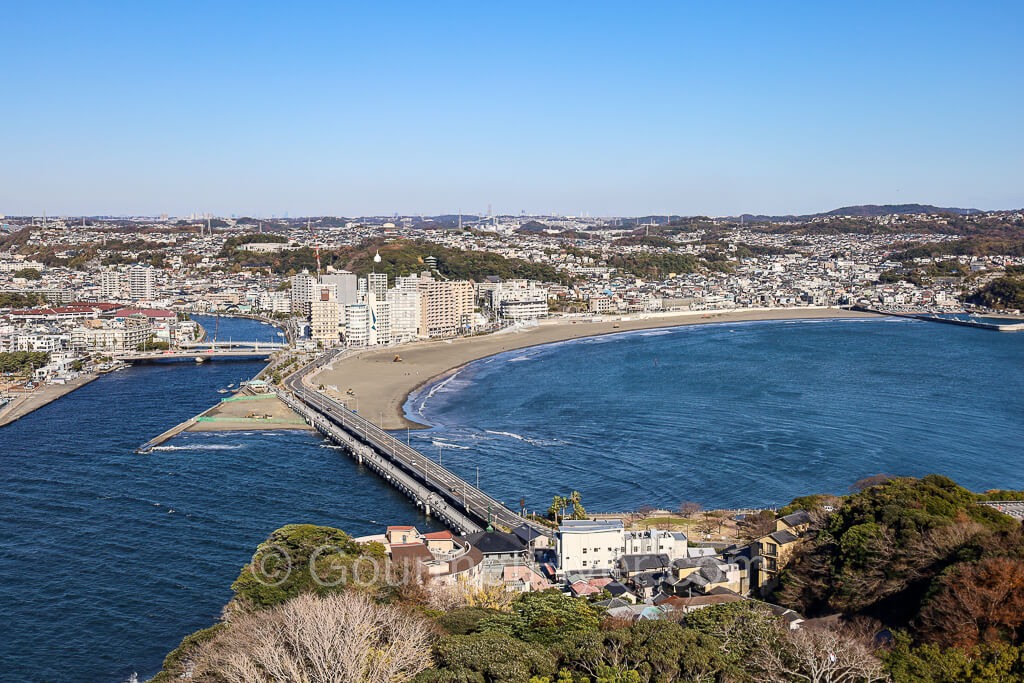
There are two levels of observation decks. The first one, which is the one that you arrive upon exiting the elevator, is enclosed and air-conditioned. It offers a 360-degree and panoramic view that is quite spectacular. The picture above shows the bridge that connects the mainland to the island, and it is the exact bridge that you walked across earlier. On a clear day, you can see as far as Mount Fuji.
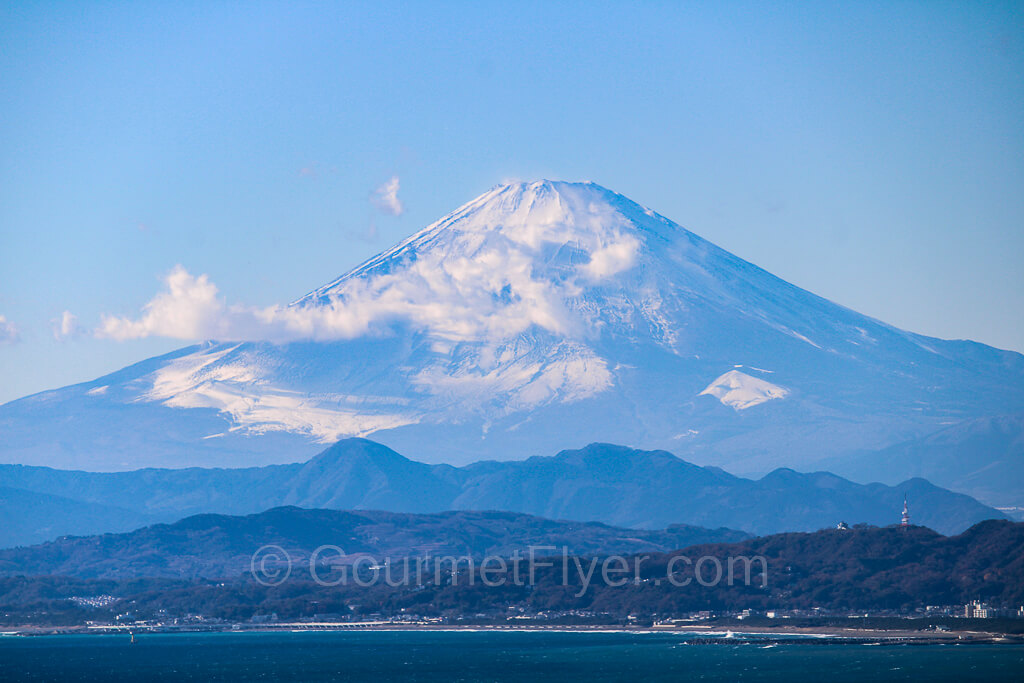
Since the glass often have reflections, it is not the perfect place for serious photography. But it is weather controlled, so you are comfortable whether it is in the middle of summer or winter.
A short spiral staircase leads you to the upper deck which is open air and is ideal for photography. But be warned that in winter it can be very cold and extremely windy, with strong ocean winds blowing onshore. However, the reward is a good shot of Mount Fuji on a clear day.
On the Way Down
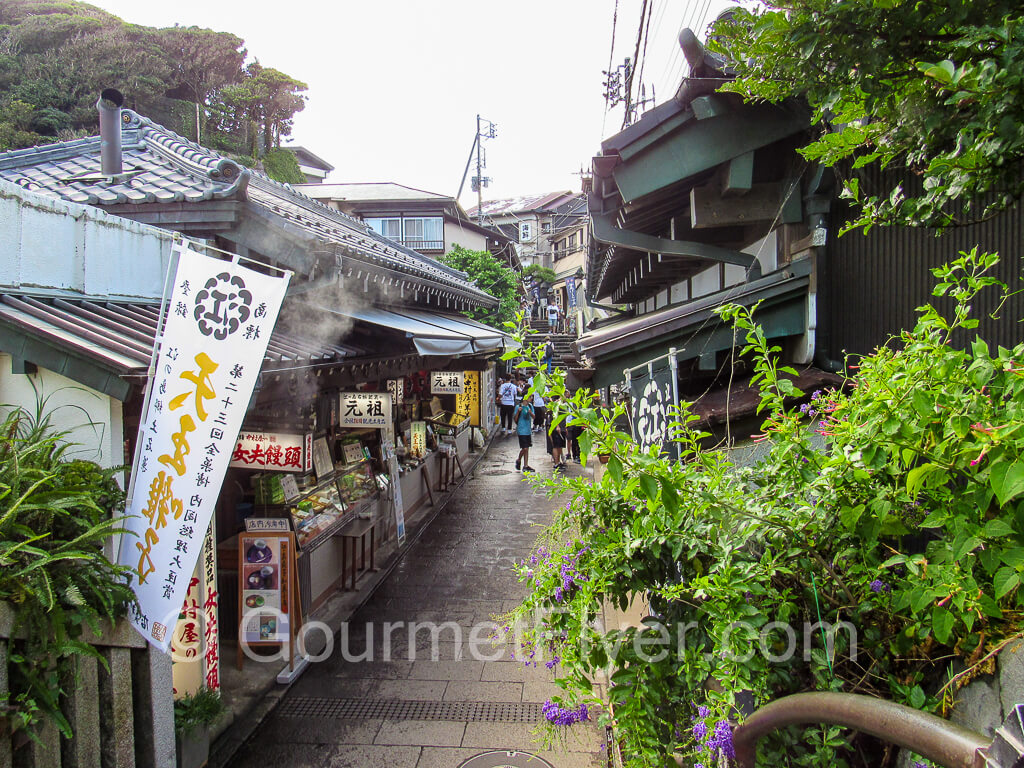
As you head toward the other side of the island and go down several sets of stairs, you will pass by many traditional restaurants, some with stunning views. All the restaurants here are small and locally owned and operated so you can really have a true taste of local flavors. However, most restaurants do not offer English menus, but their menus often come with detailed pictures, and most servers do speak some English. As always, once you are outside Central Tokyo, knowing a little bit of Japanese always helps a lot!
This is a very quaint side of Enoshima and is very refreshing especially if you are getting away from the hustles and bustles of Tokyo for a day. Every time I walk down the hill there, I feel like I am in the middle of a movie set in the backdrop of a Japanese village. Take time to enjoy that stroll.
Iwaya Caves
As you descend the couple hundred steps of stairs, follow the signs to the Iwaya Caves (fee required, included in the combo ticket). The caves, now a tourist attraction, was originally an ancient shrine and a holy ground. In fact, this is the origin of the Enoshima Shrine (and is the site of one of the three shrines known collectively as the Enoshima Shrine.) It was also the site where Buddhist monks were trained in the days of the Nara era.
The caves are more like a set of narrow tunnels with low ceilings and are rather well lit. But you are still given a candle lantern to make it easier to navigate through the darker corners of the caves. You might get a mild “Indiana Jones” kind of feeling in this atmosphere, which I think is rather cool. There are pictures and history at the entrance. Along the way, you will observe a few statues, small monuments, and some relics of the past.
Conclusion
Yes, Enoshima is a charming island and a refreshing getaway day trip from Tokyo. However, don’t even imagine that you will be on a quiet and peaceful island. This is a very popular destination for tourists from both within and outside Japan. Especially during the summer months, you will see crowds everywhere and long lines at all the eateries and attractions, especially at the Sea Candle.
It is not exactly paradise island, but there is something exciting about the journey itself — especially when you are on the Enoshima Electric Railway train winding through the quaint and traditional local neighborhoods. The island is also a refreshing experience, especially for visitors who venture outside of a major city like Tokyo for the first time.
If you have already seen most of Tokyo, I highly recommend taking a day trip to Enoshima to enjoy a different, unique, and almost enchanting experience.
